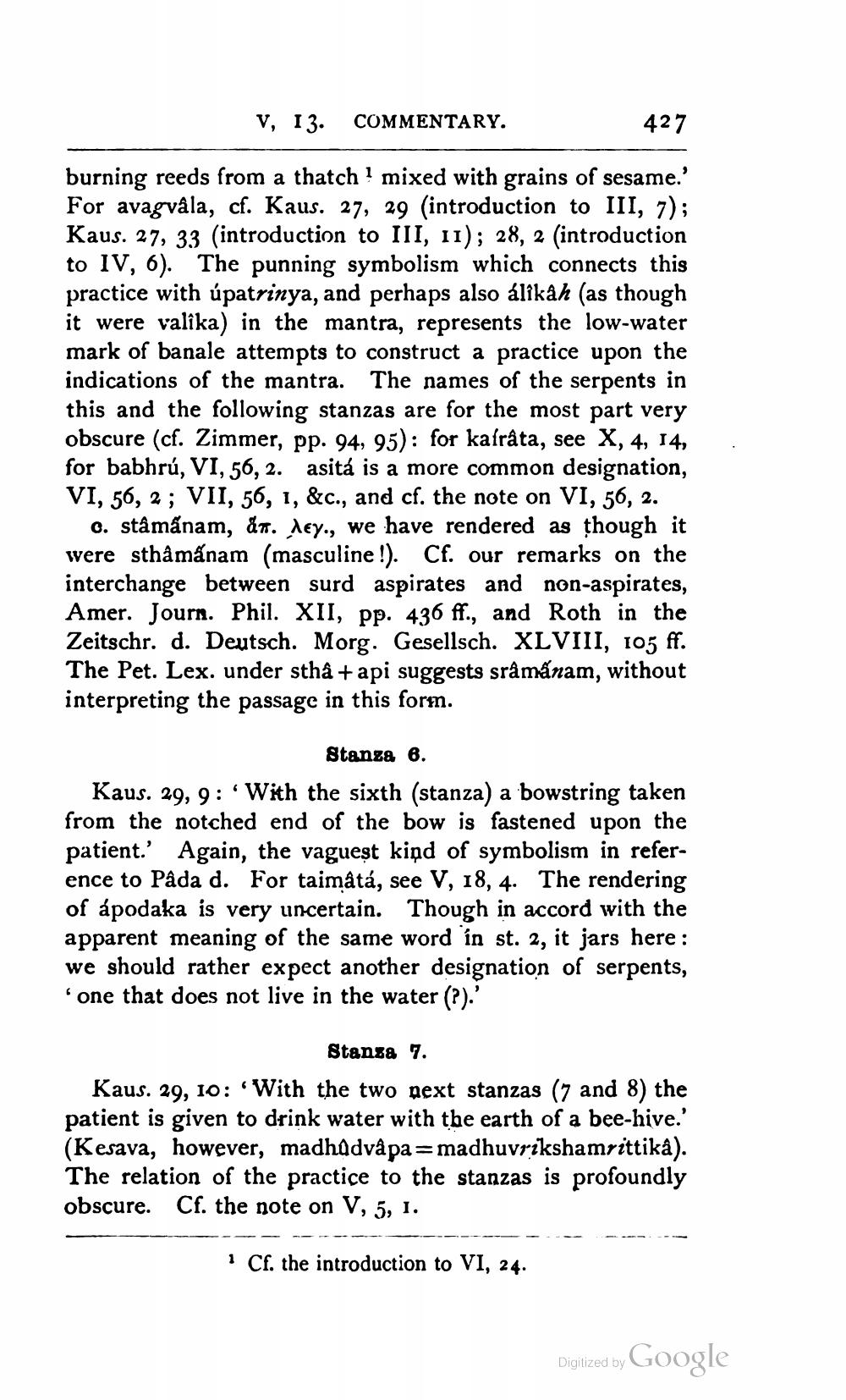________________
V, 13. COMMENTARY.
427
burning reeds from a thatch? mixed with grains of sesame.' For avagvåla, cf. Kaus. 27, 29 (introduction to III, 7); Kaus. 27, 33 (introduction to III, 11); 28, 2 (introduction to IV, 6). The punning symbolism which connects this practice with úpatrinya, and perhaps also álikah (as though it were valîka) in the mantra, represents the low-water mark of banale attempts to construct a practice upon the indications of the mantra. The names of the serpents in this and the following stanzas are for the most part very obscure (cf. Zimmer, pp. 94, 95): for kasrata, see X, 4, 14, for babhrú, VI, 56, 2. asitá is a more common designation, VI, 56, 2; VII, 56, 1, &c., and cf. the note on VI, 56, 2.
0. stâmānam, dr. dey., we have rendered as though it were sthà mánam (masculine !). Cf. our remarks on the interchange between surd aspirates and non-aspirates, Amer. Journ. Phil. XII, pp. 436 ff., and Roth in the Zeitschr. d. Deutsch. Morg. Gesellsch. XLVIII, 105 ff. The Pet. Lex. under stha + api suggests sråmánam, without interpreting the passage in this form.
Stanza 6.
Kaus. 29, 9: 'With the sixth (stanza) a bowstring taken from the notched end of the bow is fastened upon the patient.' Again, the vaguest kind of symbolism in reference to Pâda d. For taimâtá, see V, 18, 4. The rendering of ápodaka is very uncertain. Though in accord with the apparent meaning of the same word in st. 2, it jars here: we should rather expect another designation of serpents, 'one that does not live in the water (?).'
Stansa 7.
Kaus. 29, 10: "With the two next stanzas (7 and 8) the patient is given to drink water with the earth of a bee-hive.' (Kesava, however, madhůdvå pa=madhuvrikshamrittika). The relation of the practice to the stanzas is profoundly obscure. Cf. the note on V, 5, 1.
-- --------- · Cf. the introduction to VI, 24.
Digized by Google




